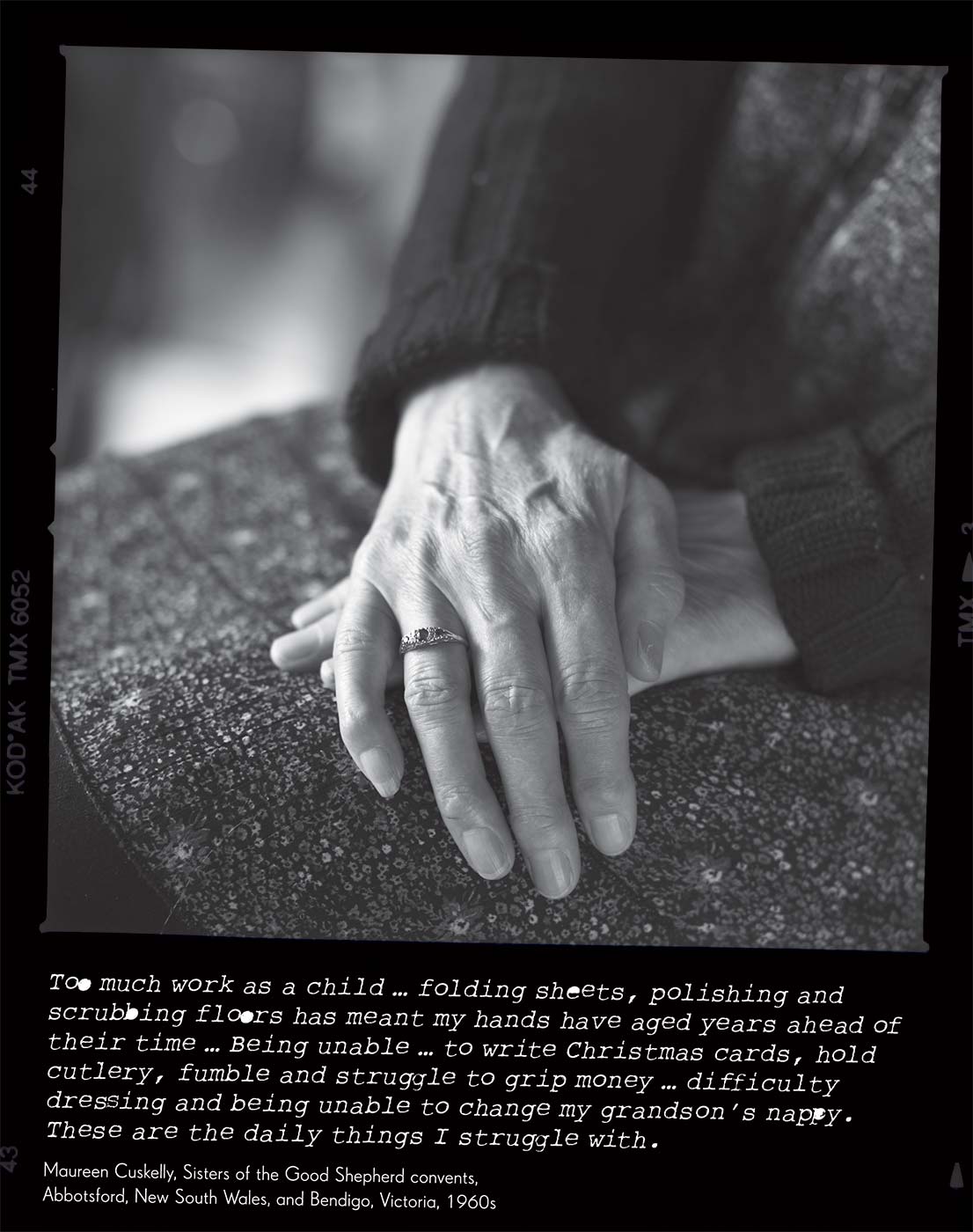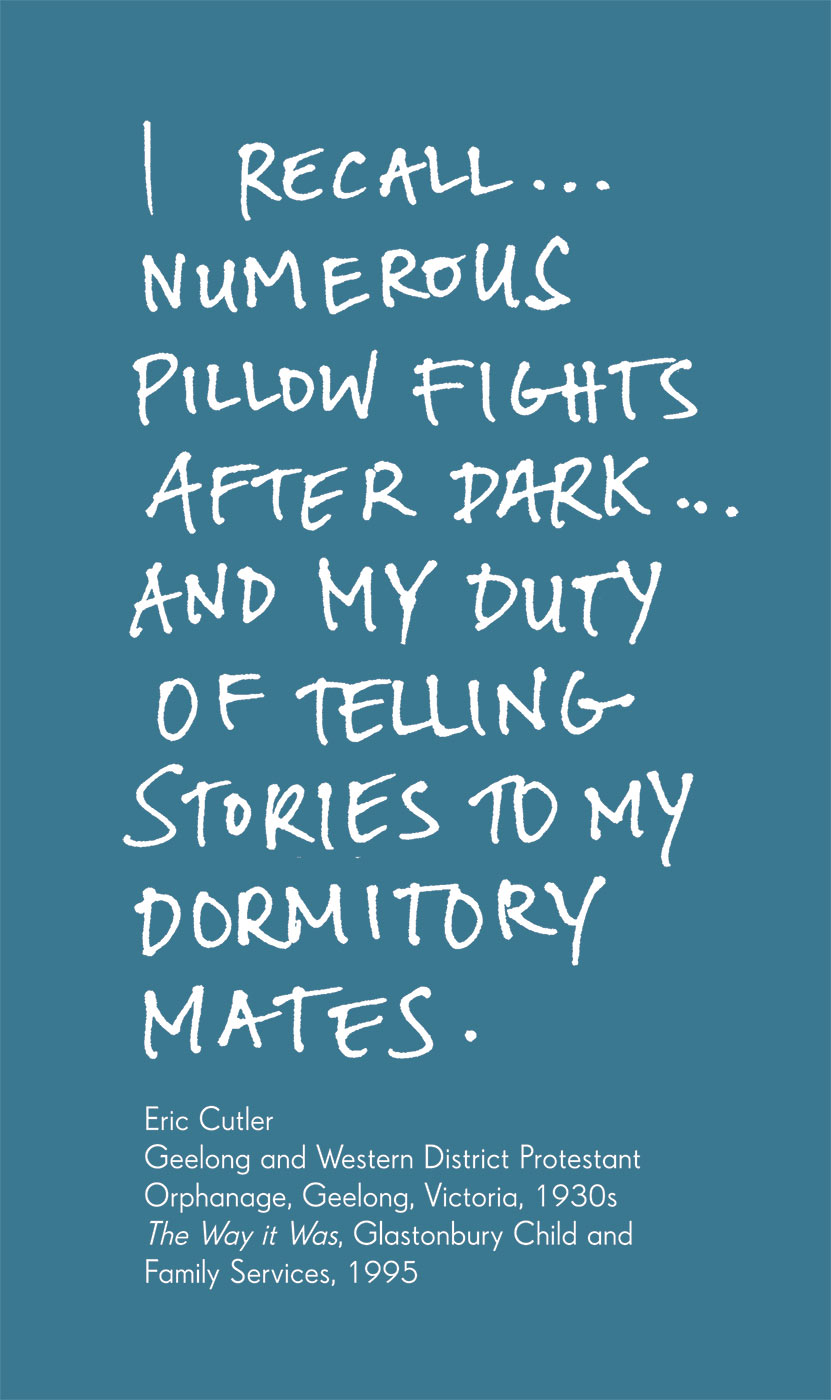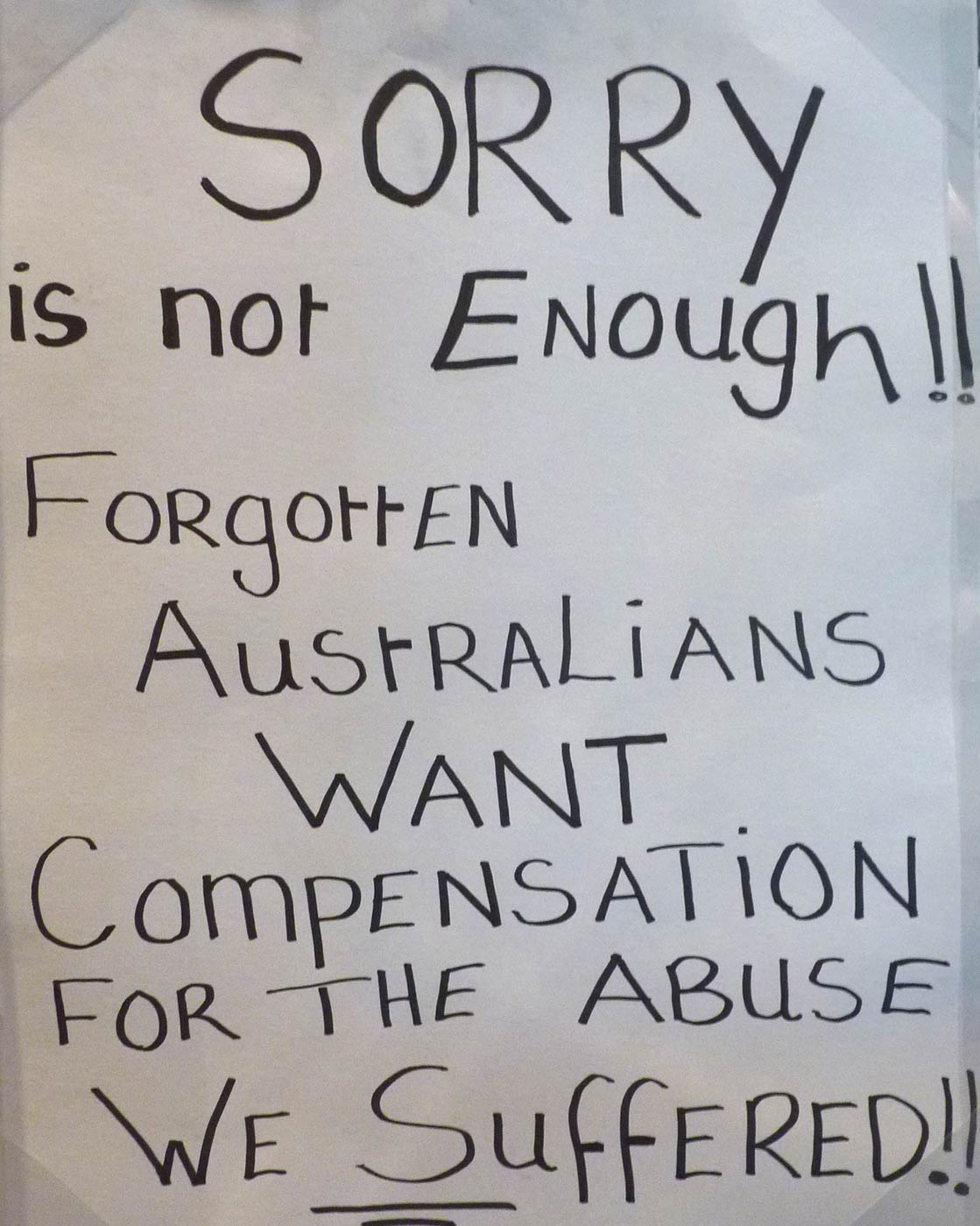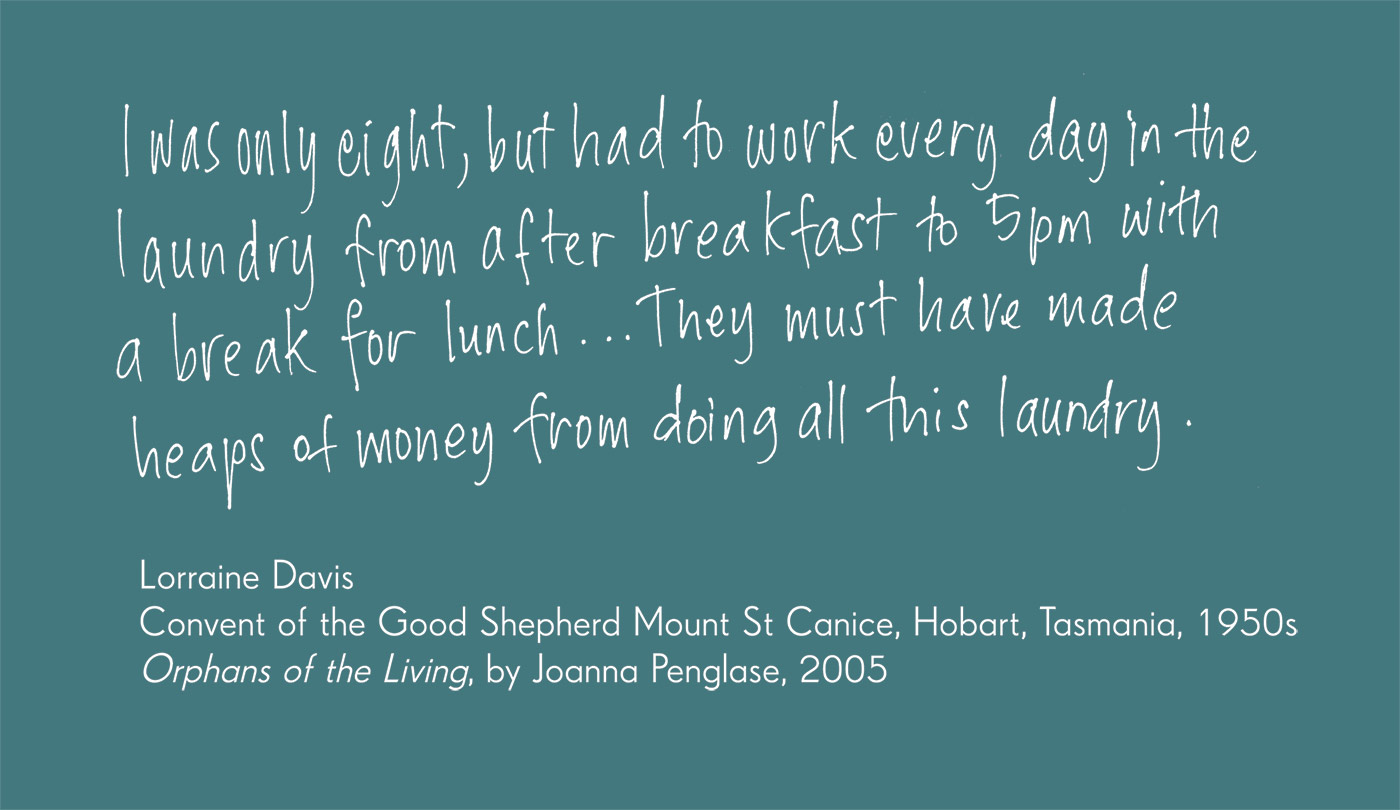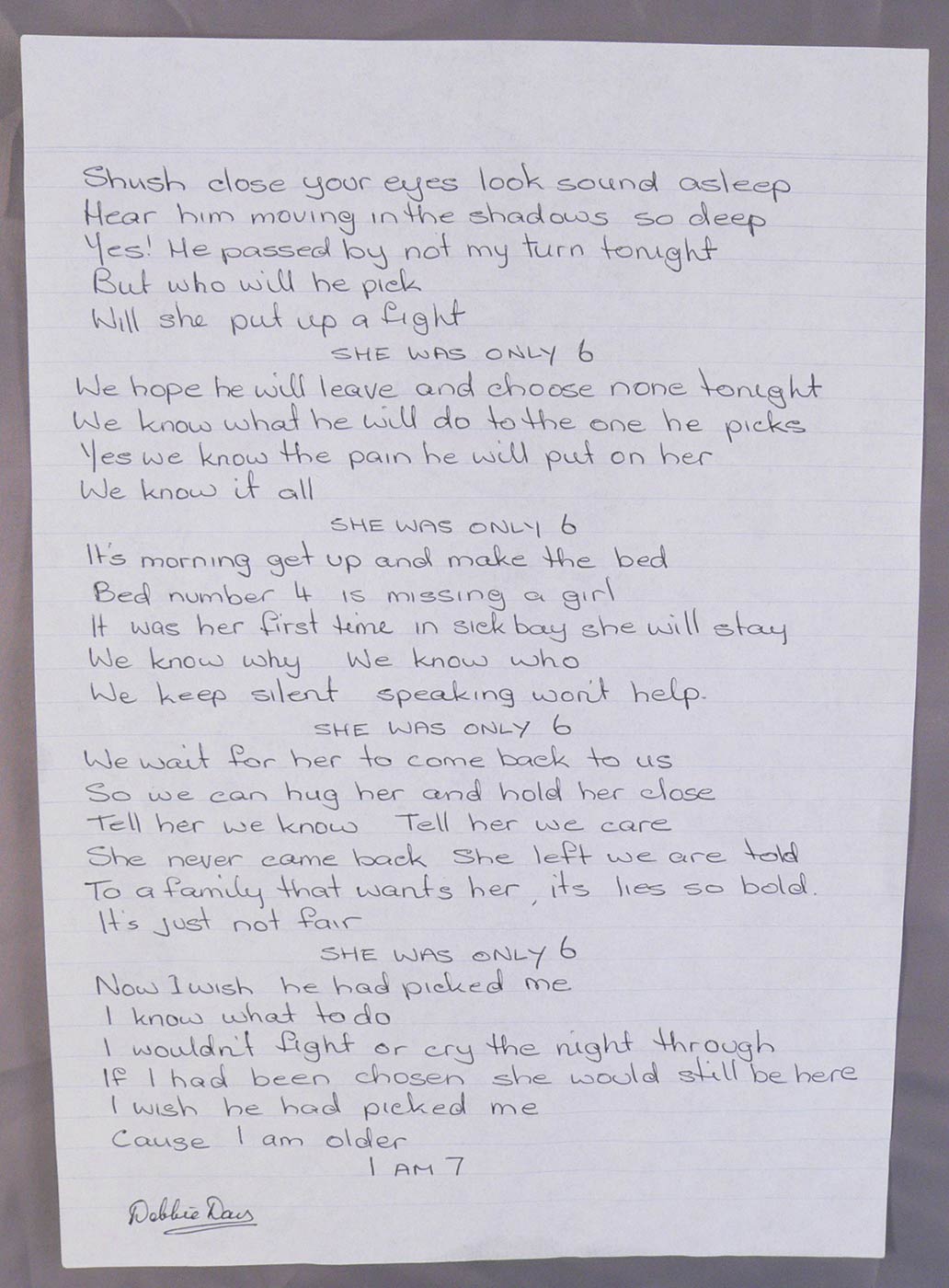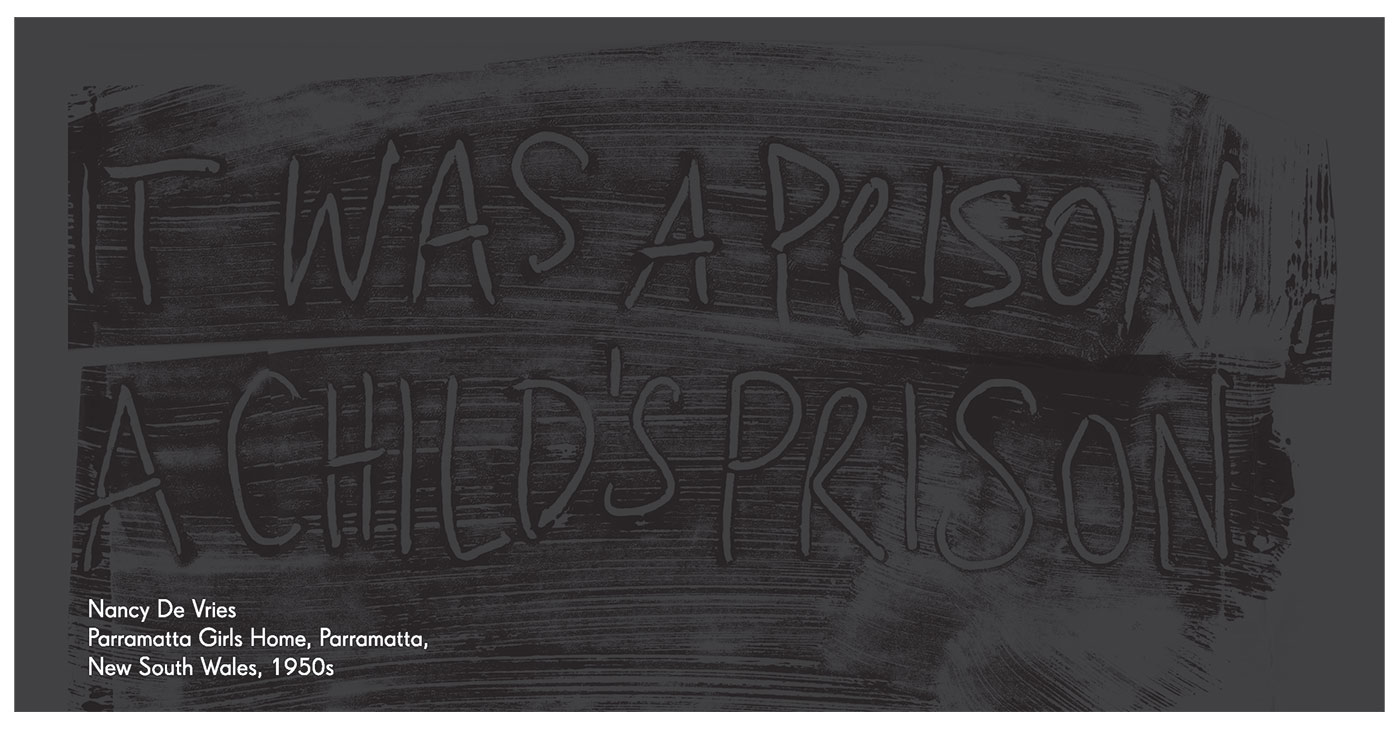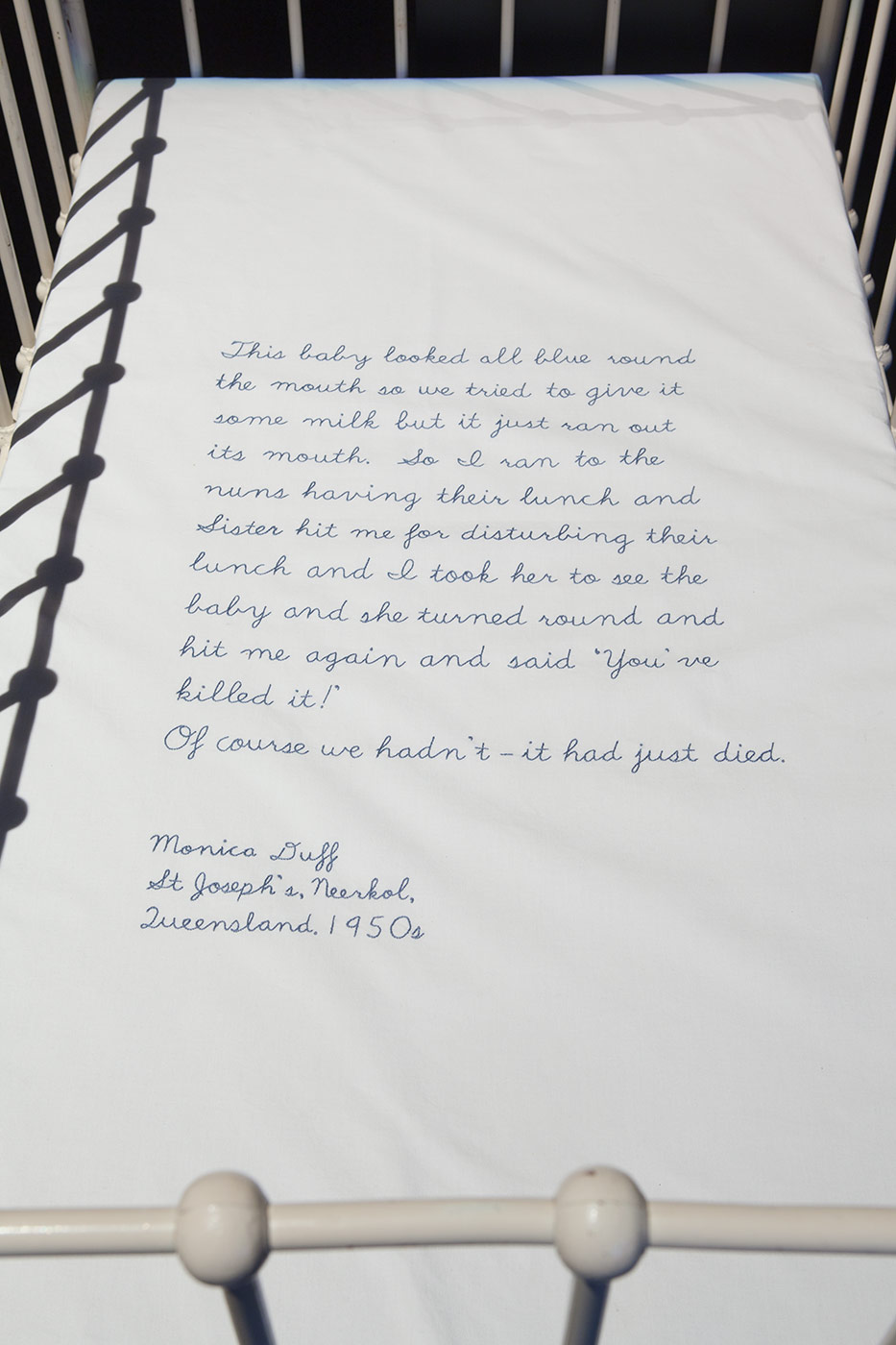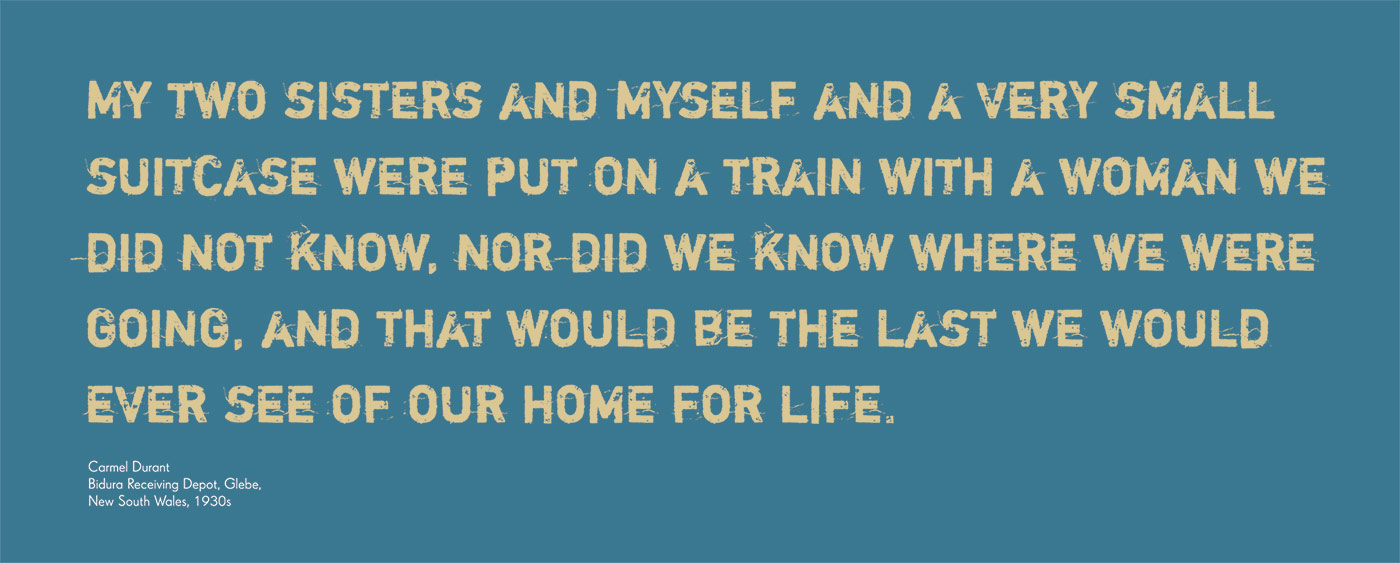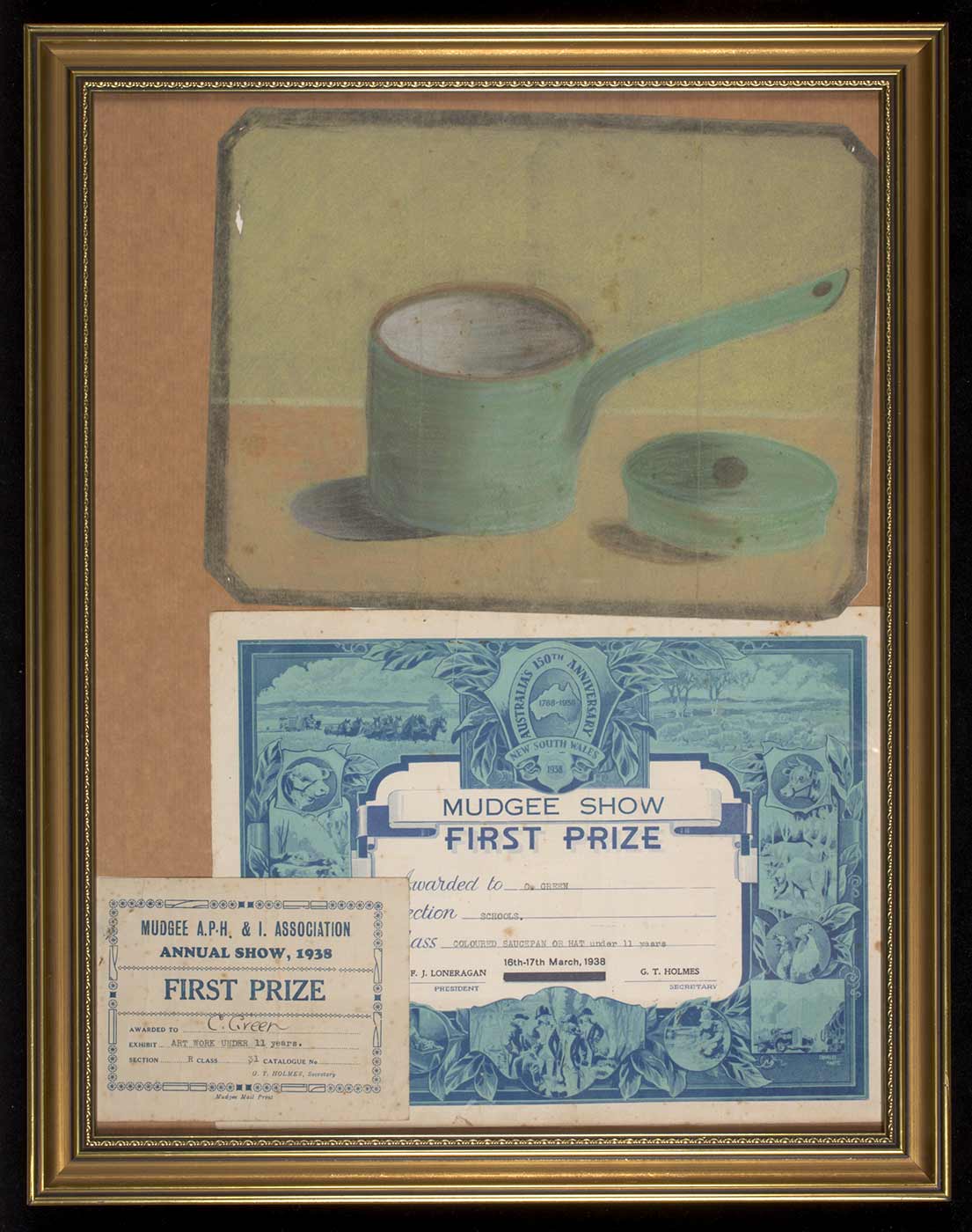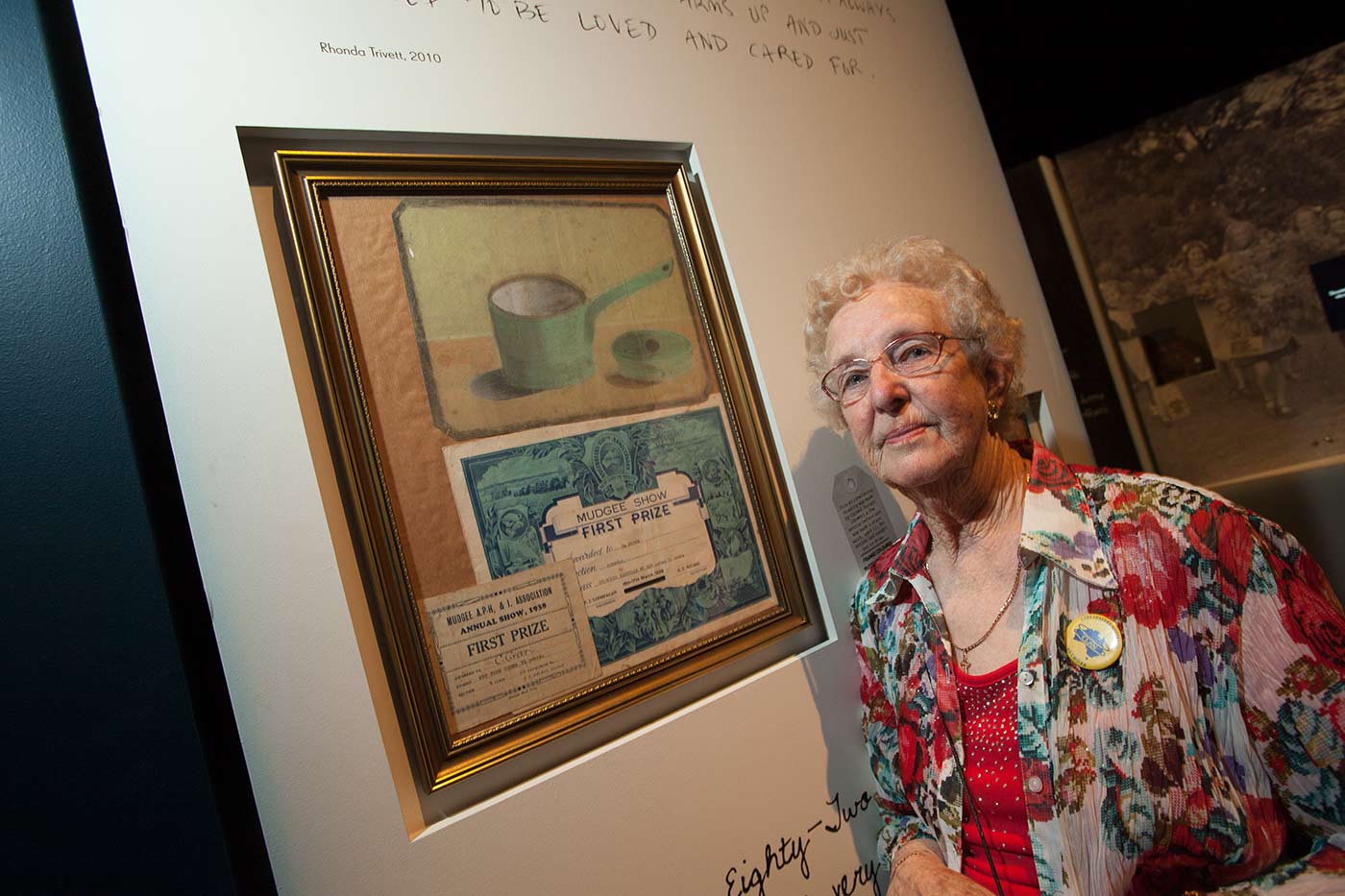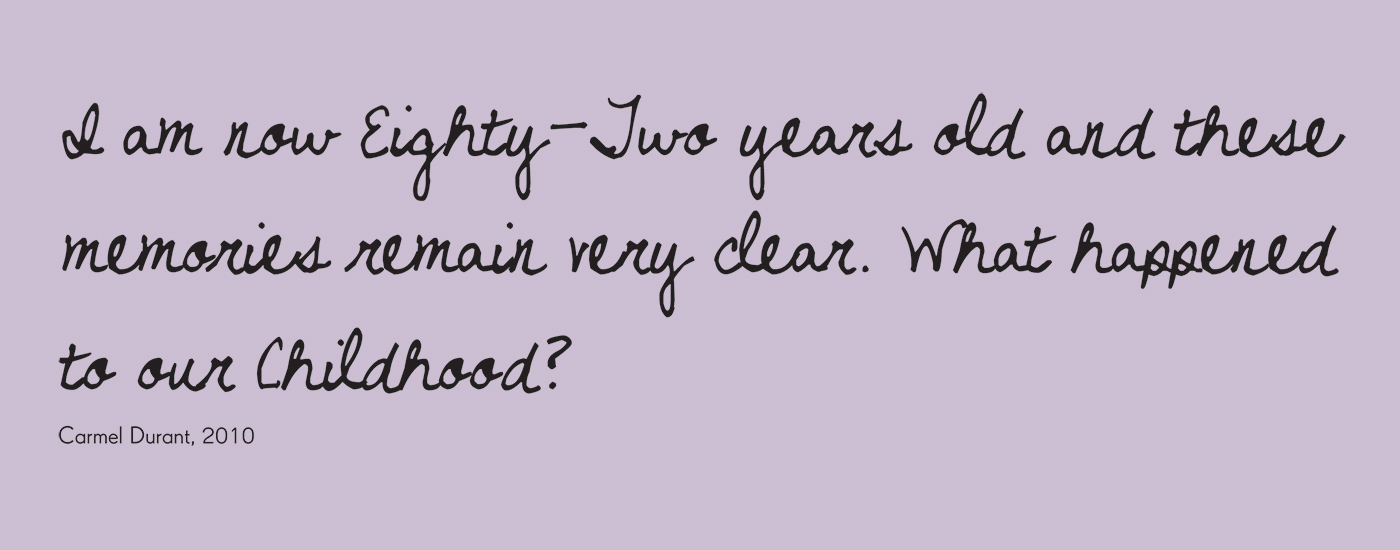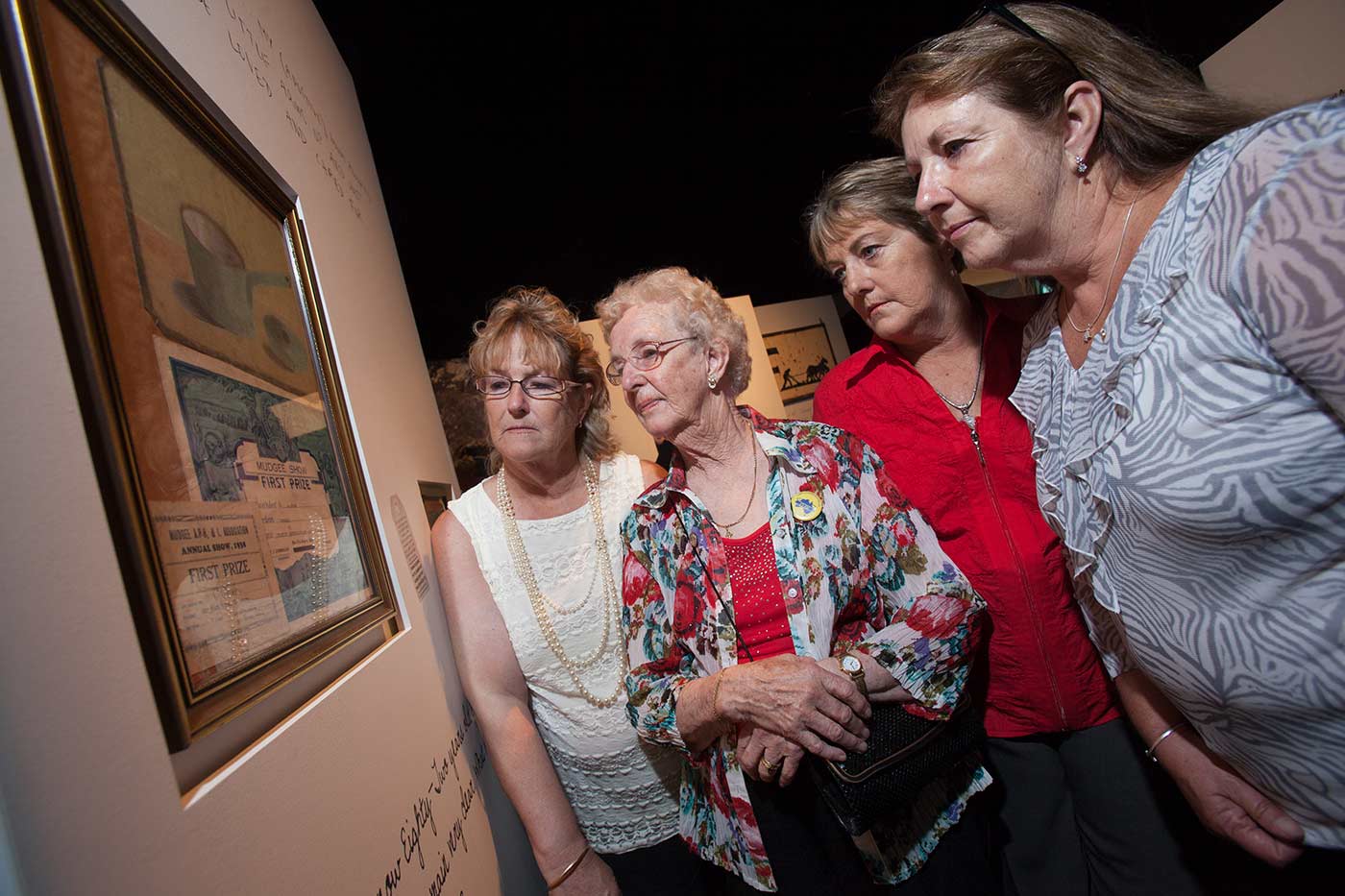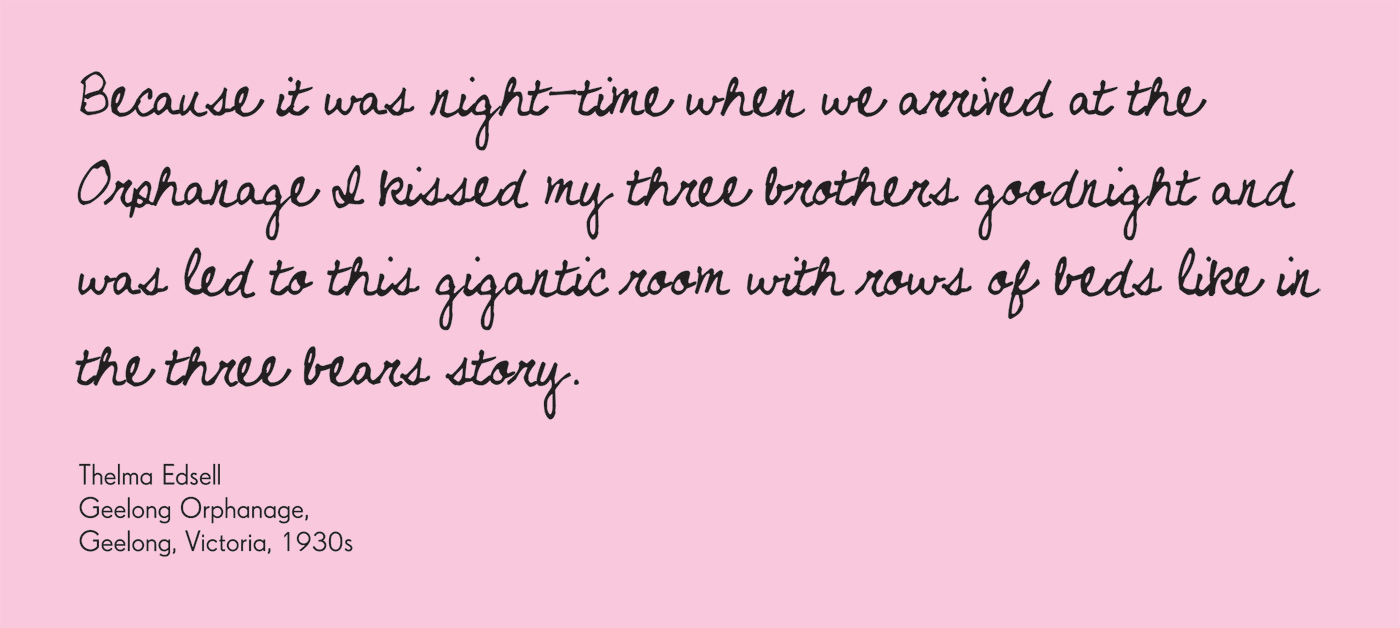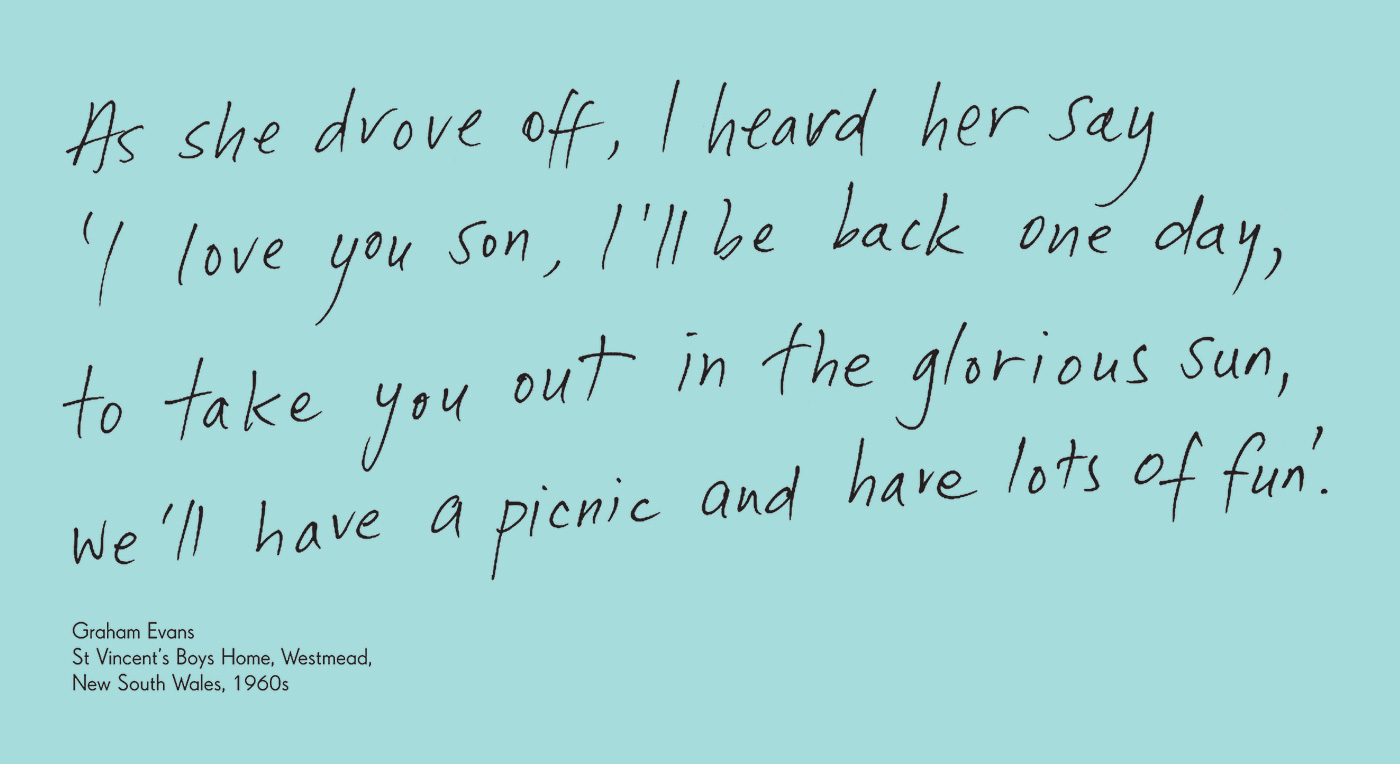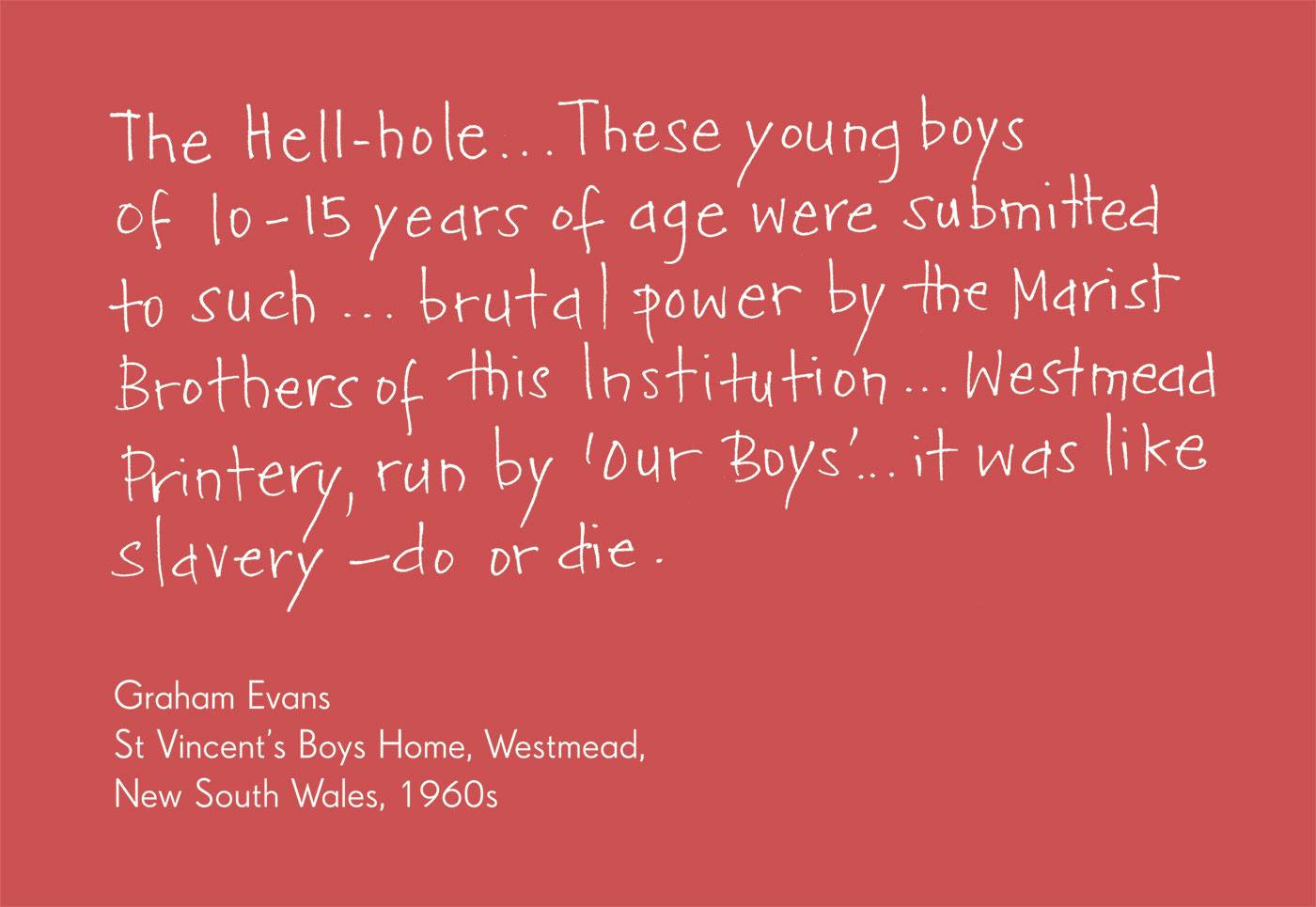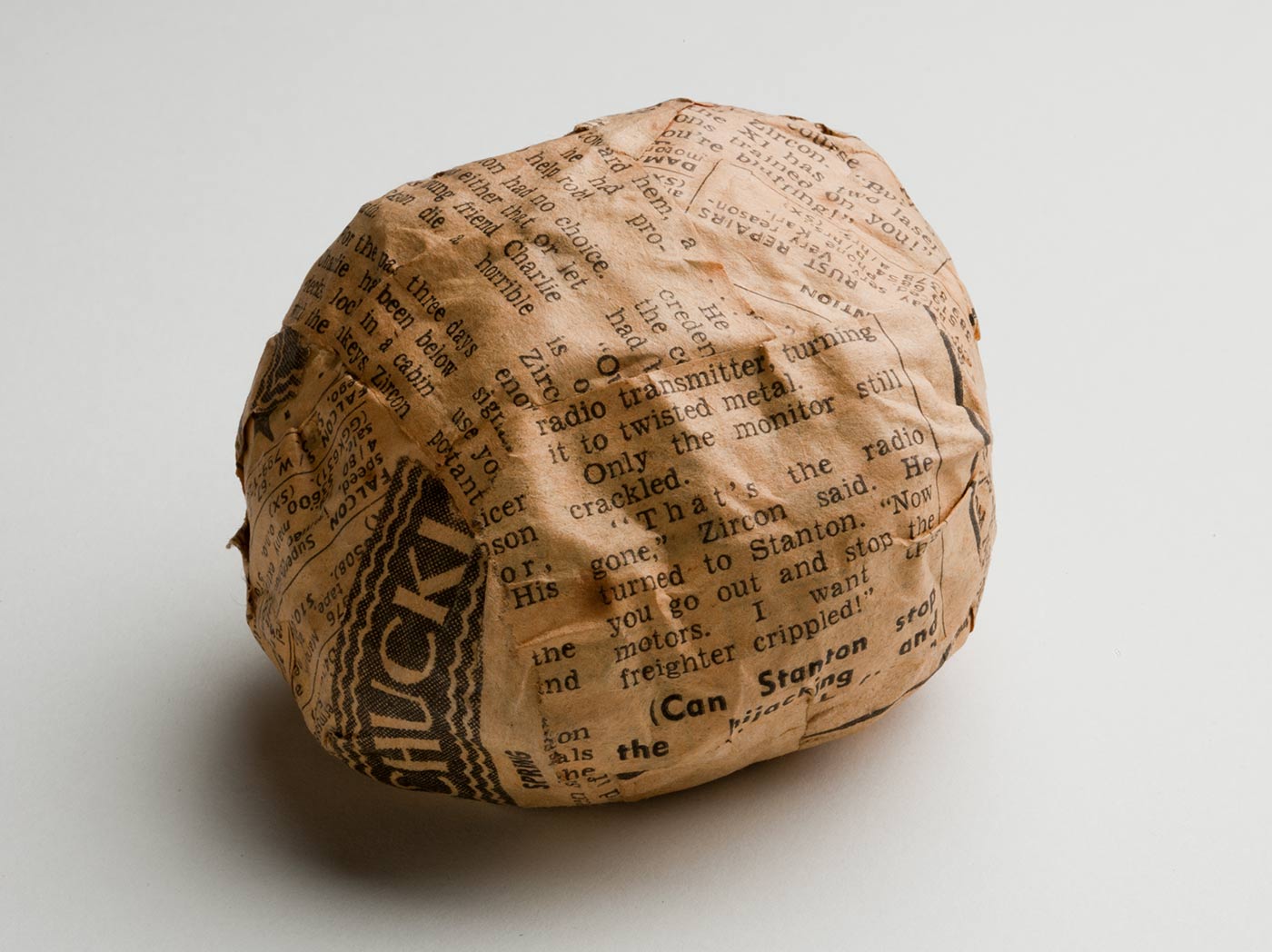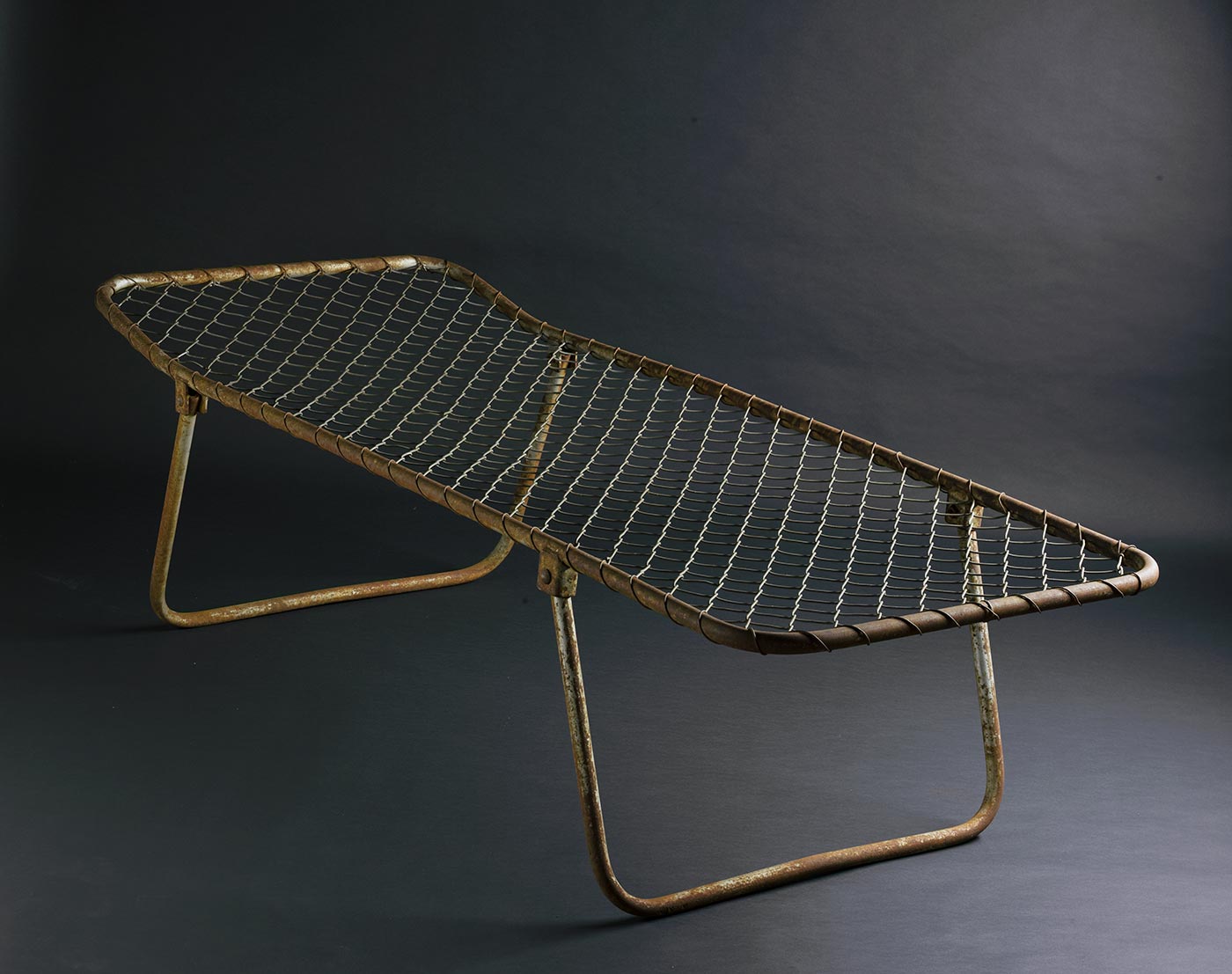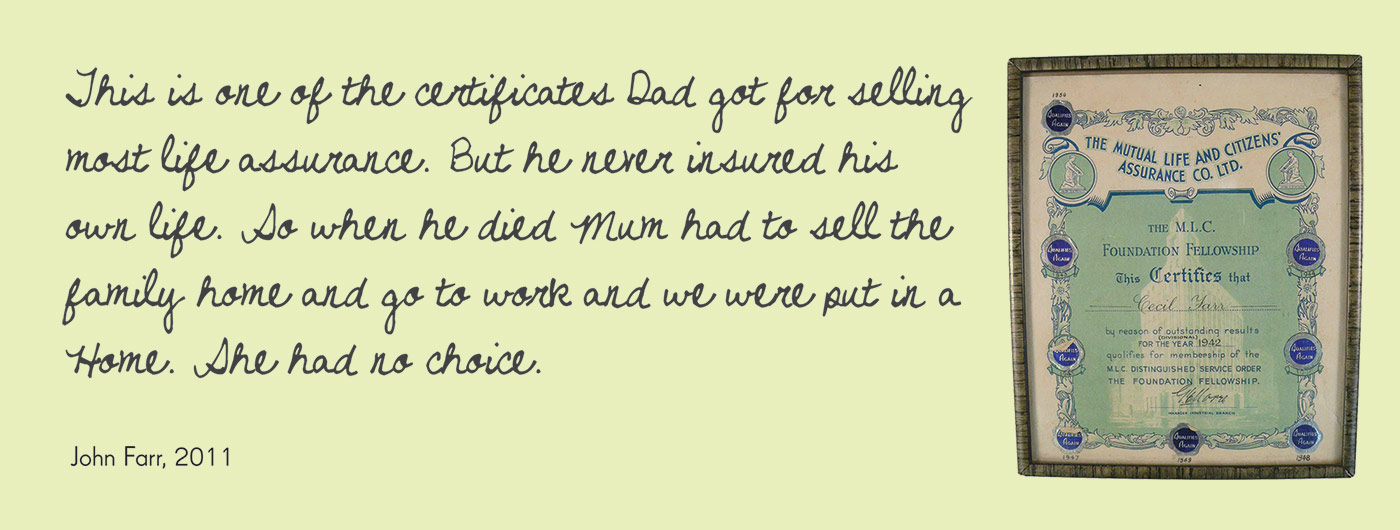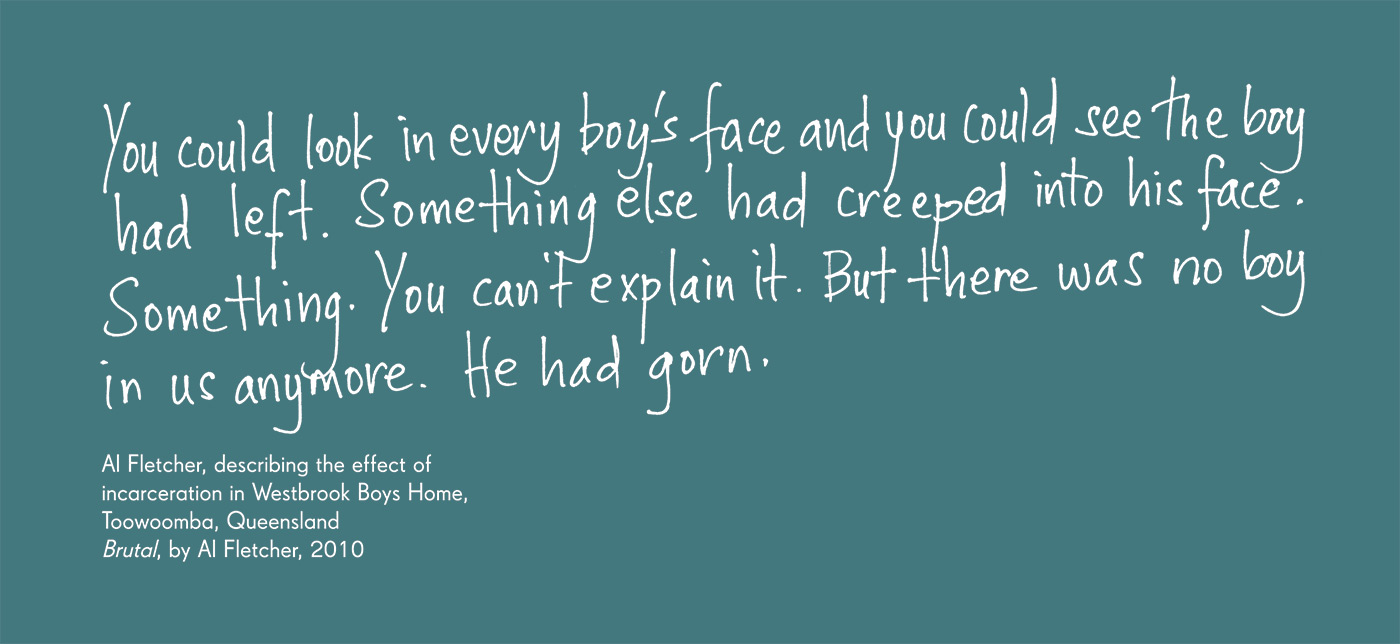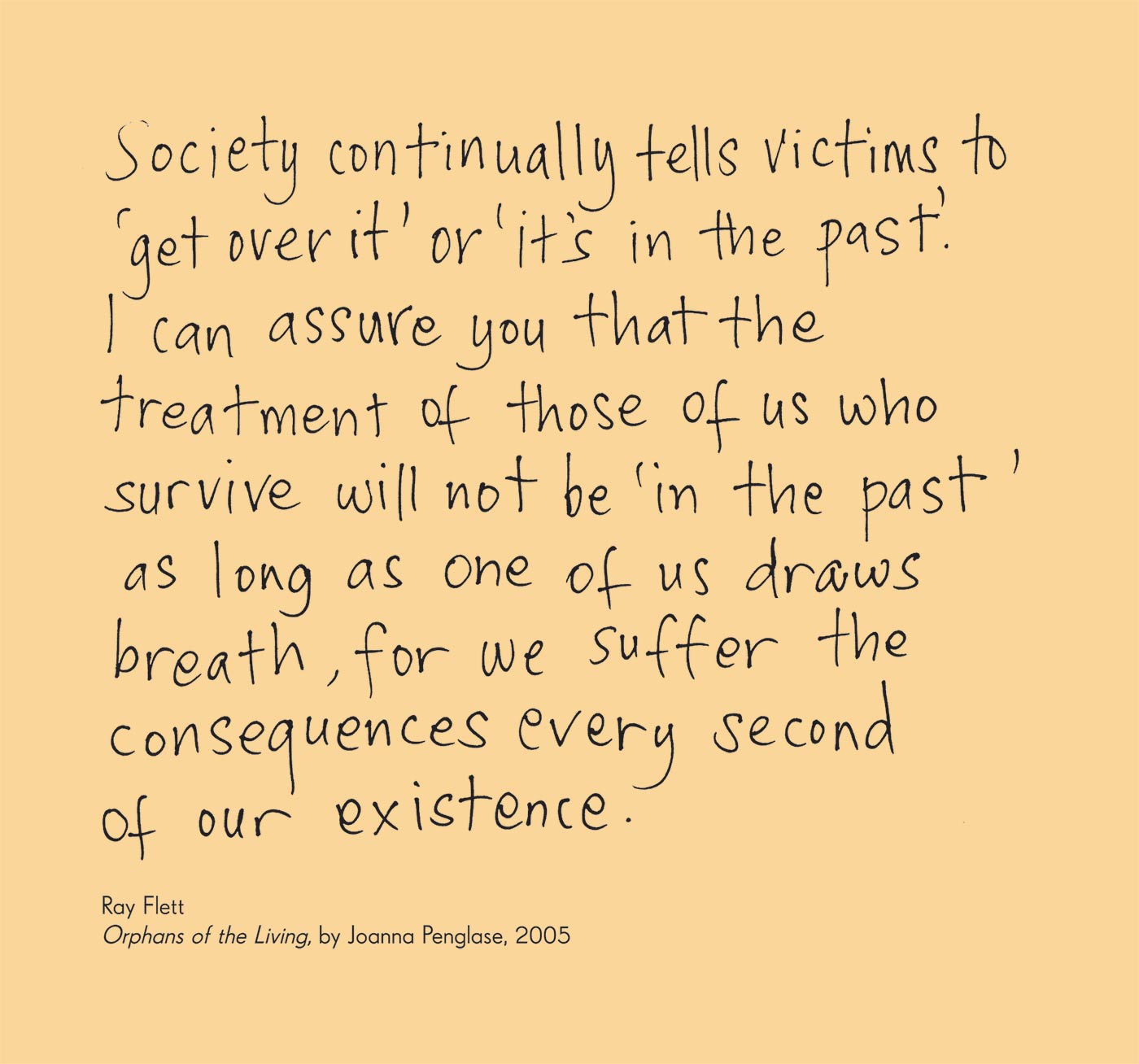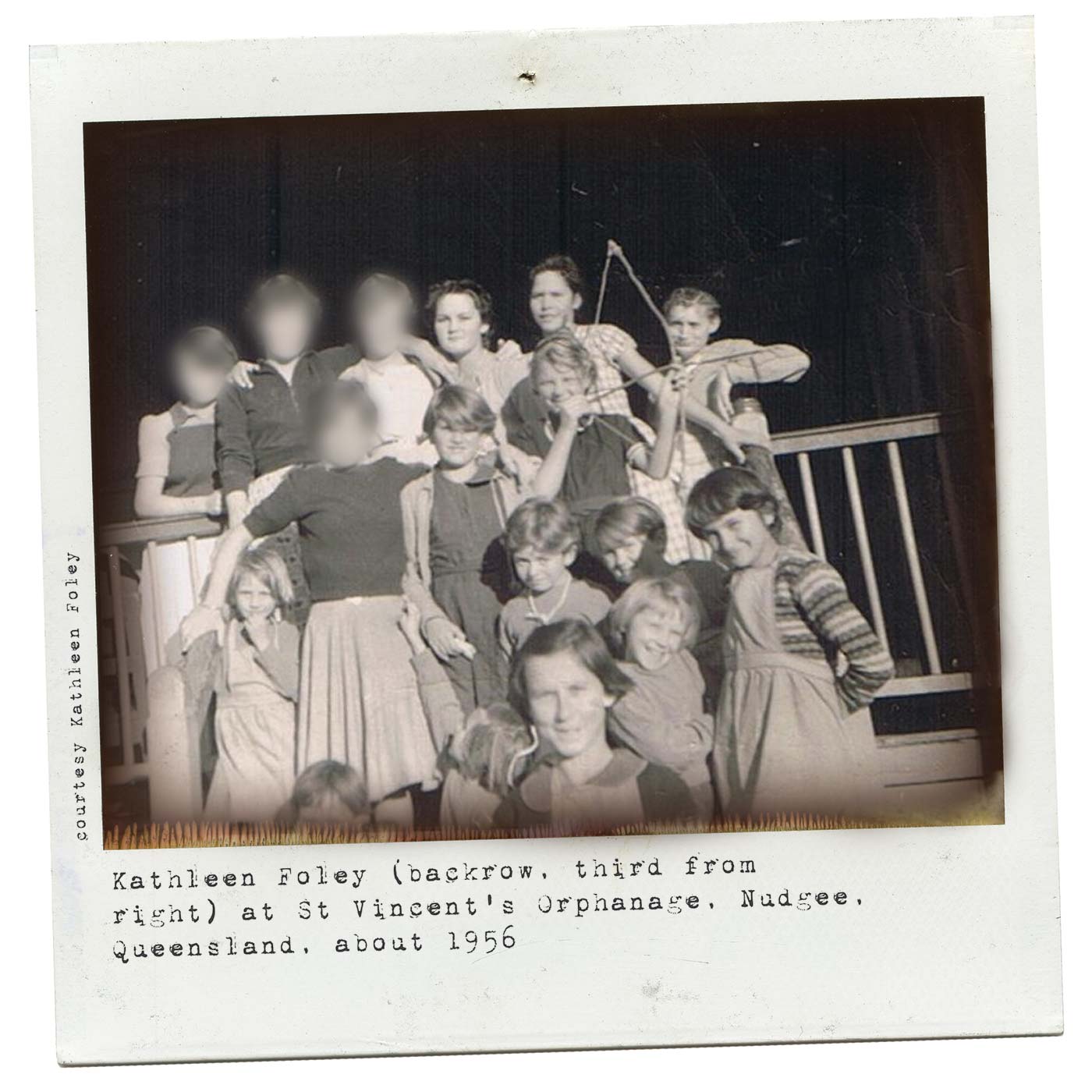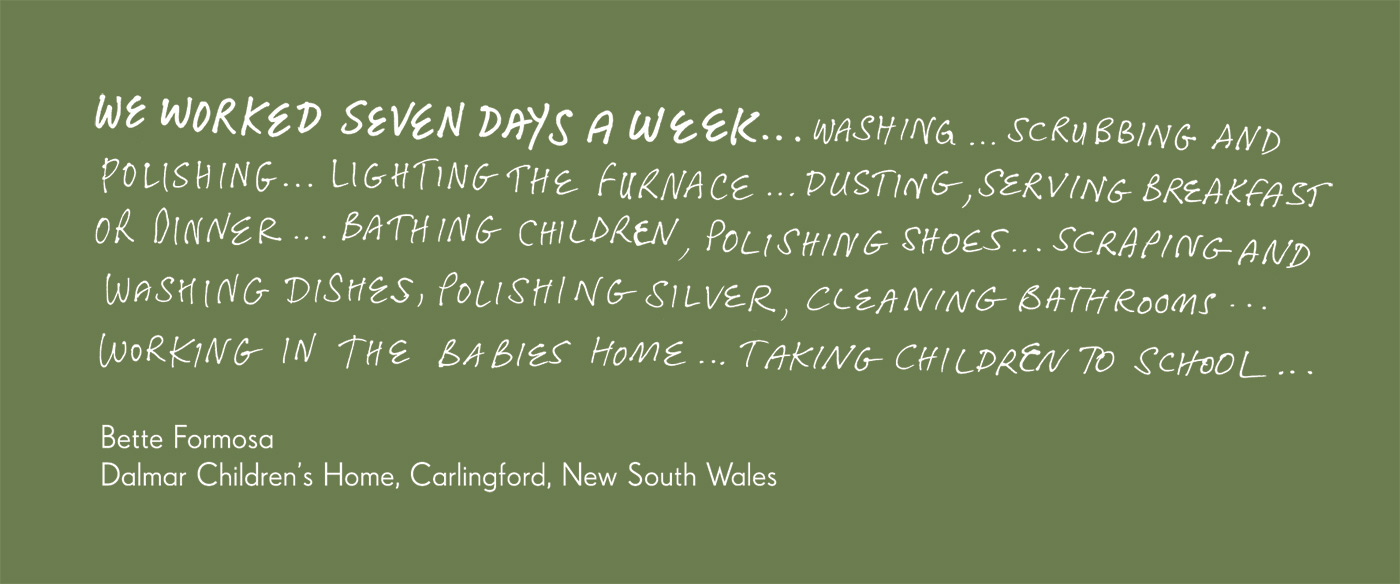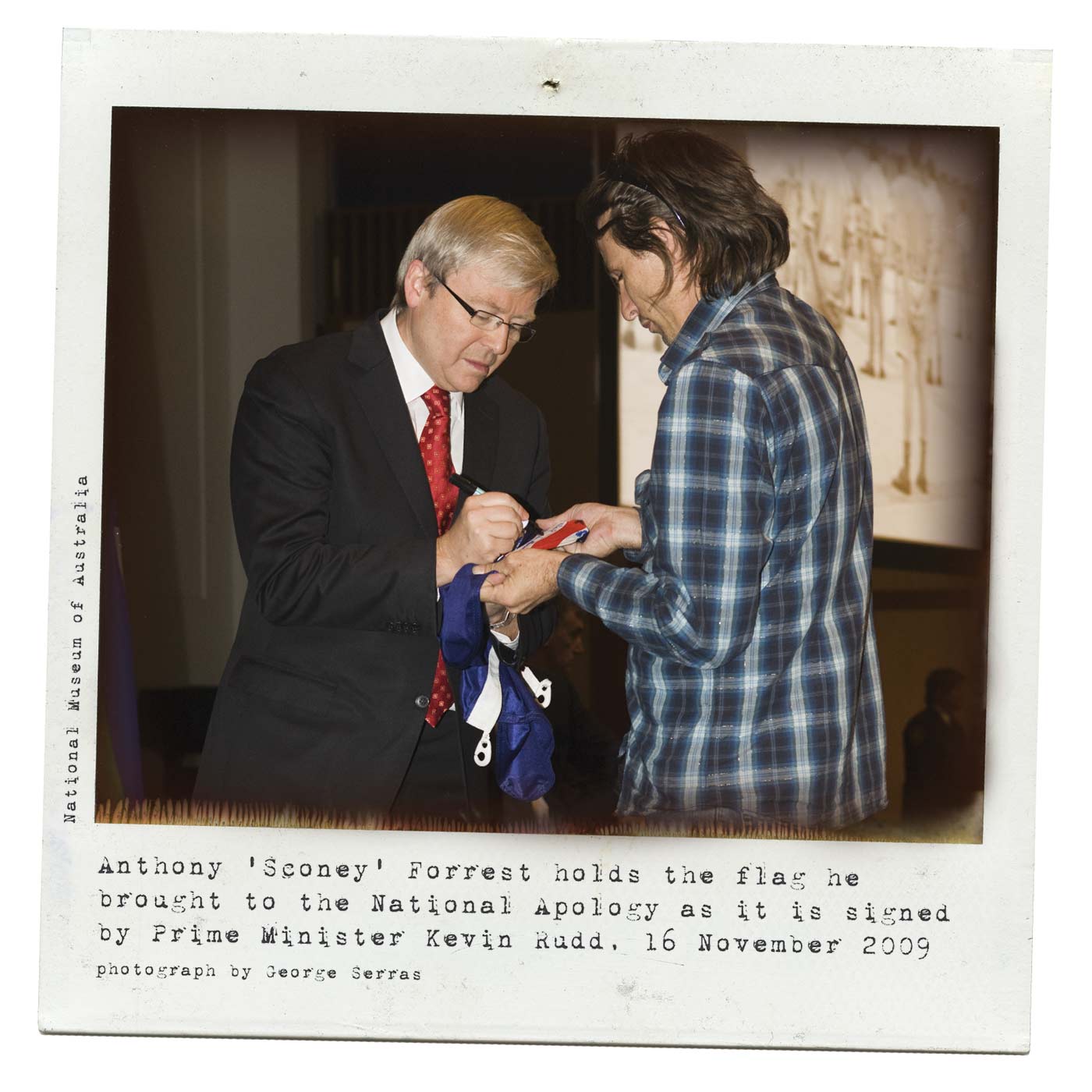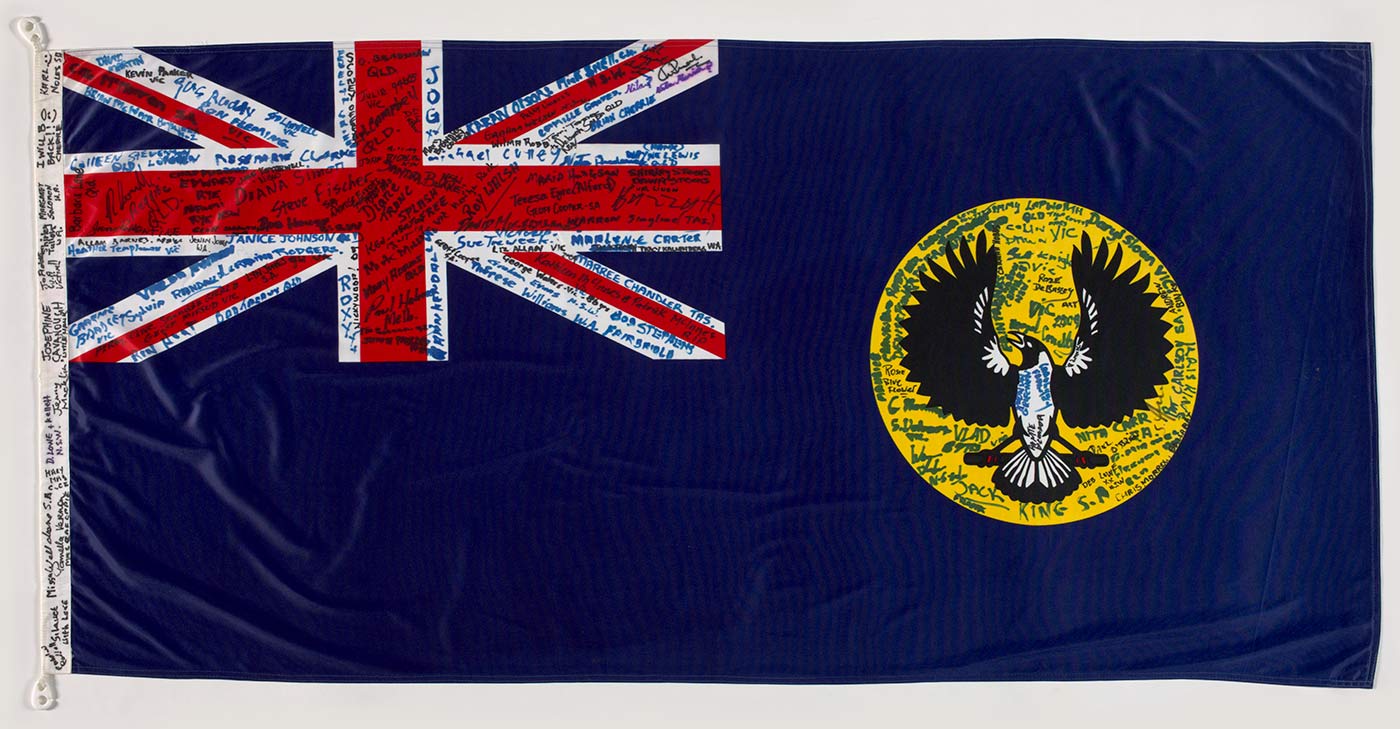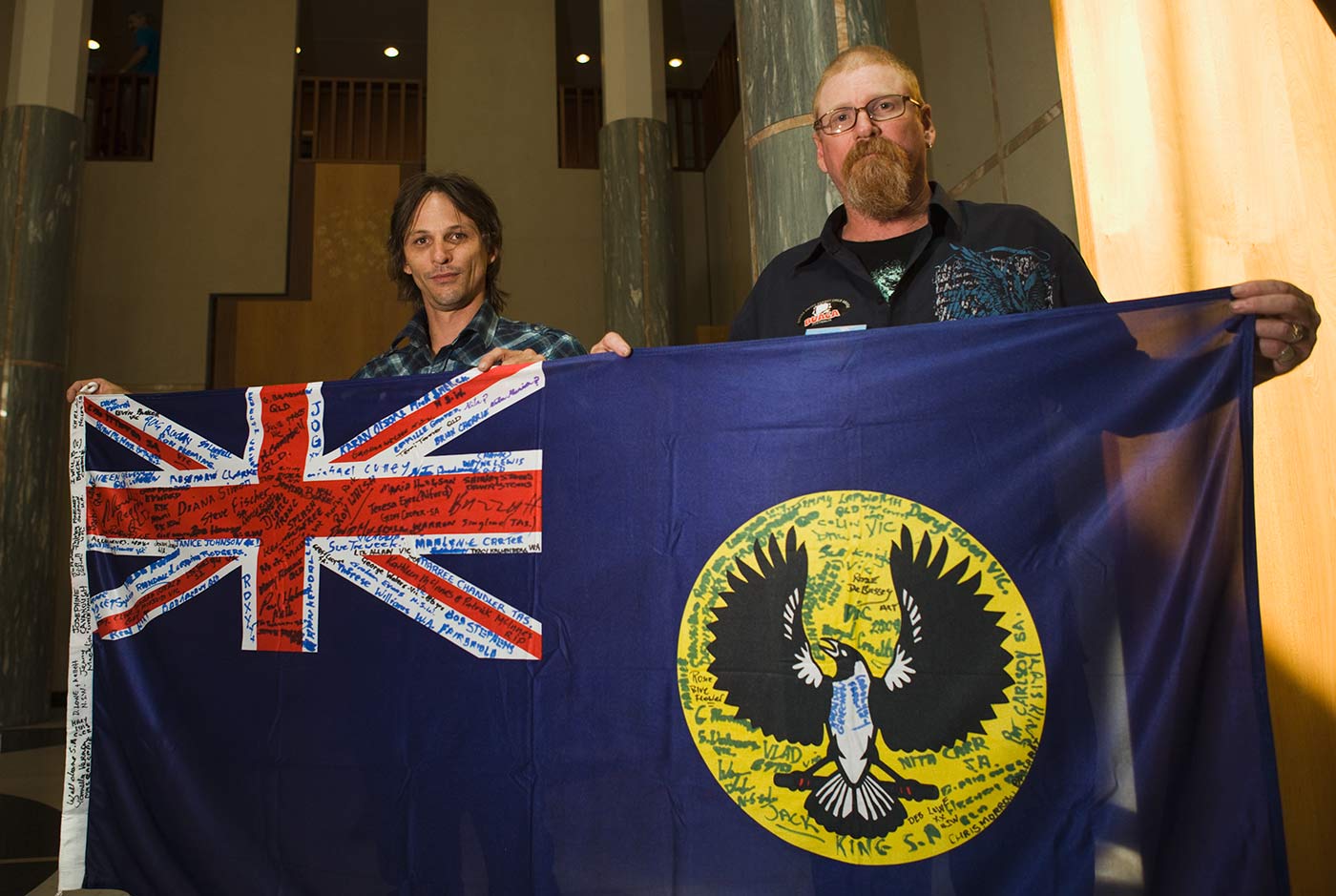This website uses words, photos and objects from people who spent time growing up in children’s homes, orphanages and other ‘care’ institutions.
These pages feature personal contributions to the National Museum of Australia’s Inside exhibition. They tell only a small part of each person’s story.
You may also like
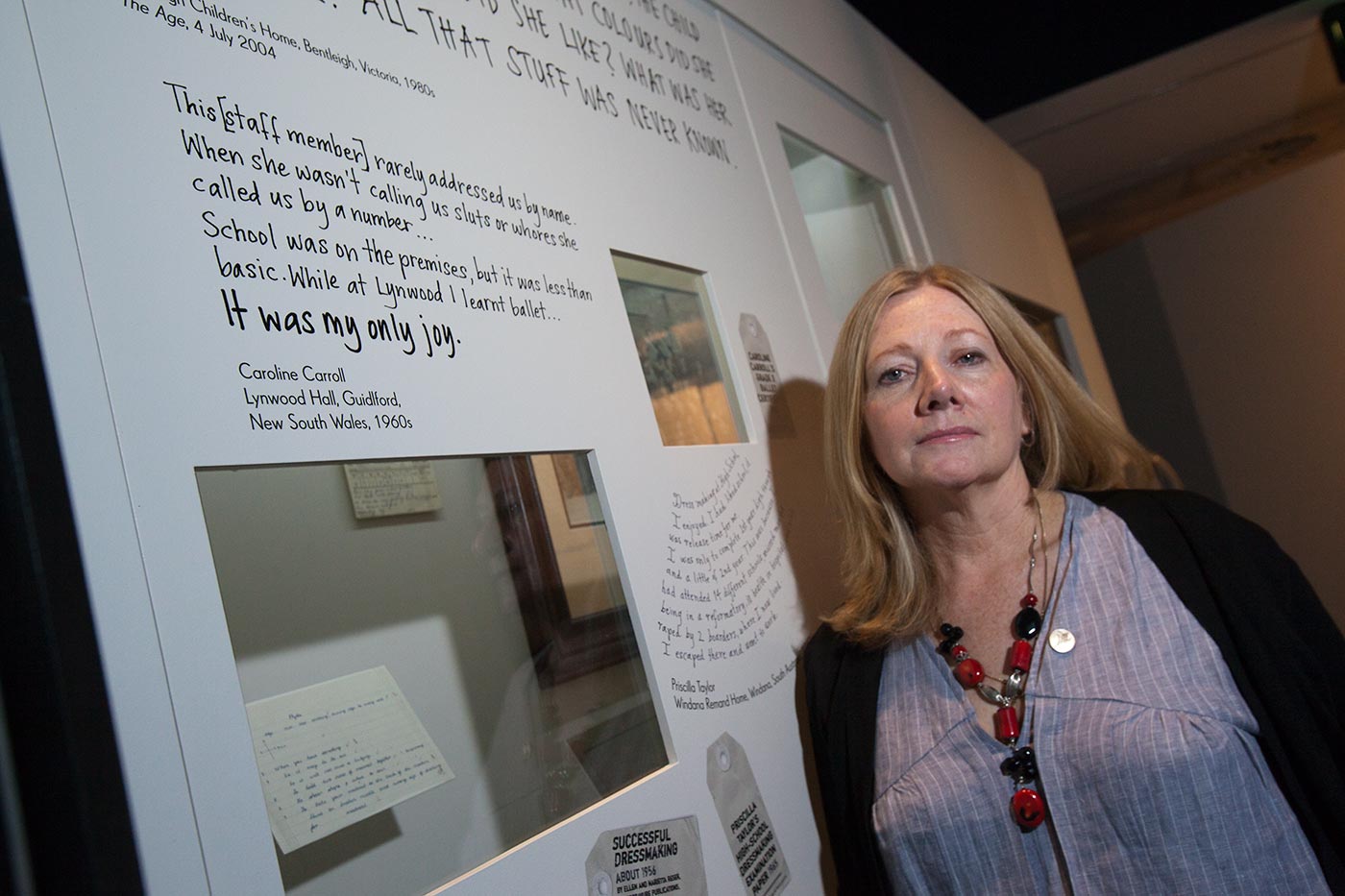
![Exhibition graphic panel that reads: 'This [staff member] rarely addressed us by name. When she wasn't calling us sluts or whores she called us by a number ... School was on the premises, but it was less than basic. While at Lynwood I learnt ballet ... It was my only joy', attributed to 'Caroline Carroll, Lynwood Hall, Guildford, New South Wales, 1960s'. - click to view larger image](https://www.nma.gov.au/__data/assets/image/0007/717163/This-staff-member.jpg)
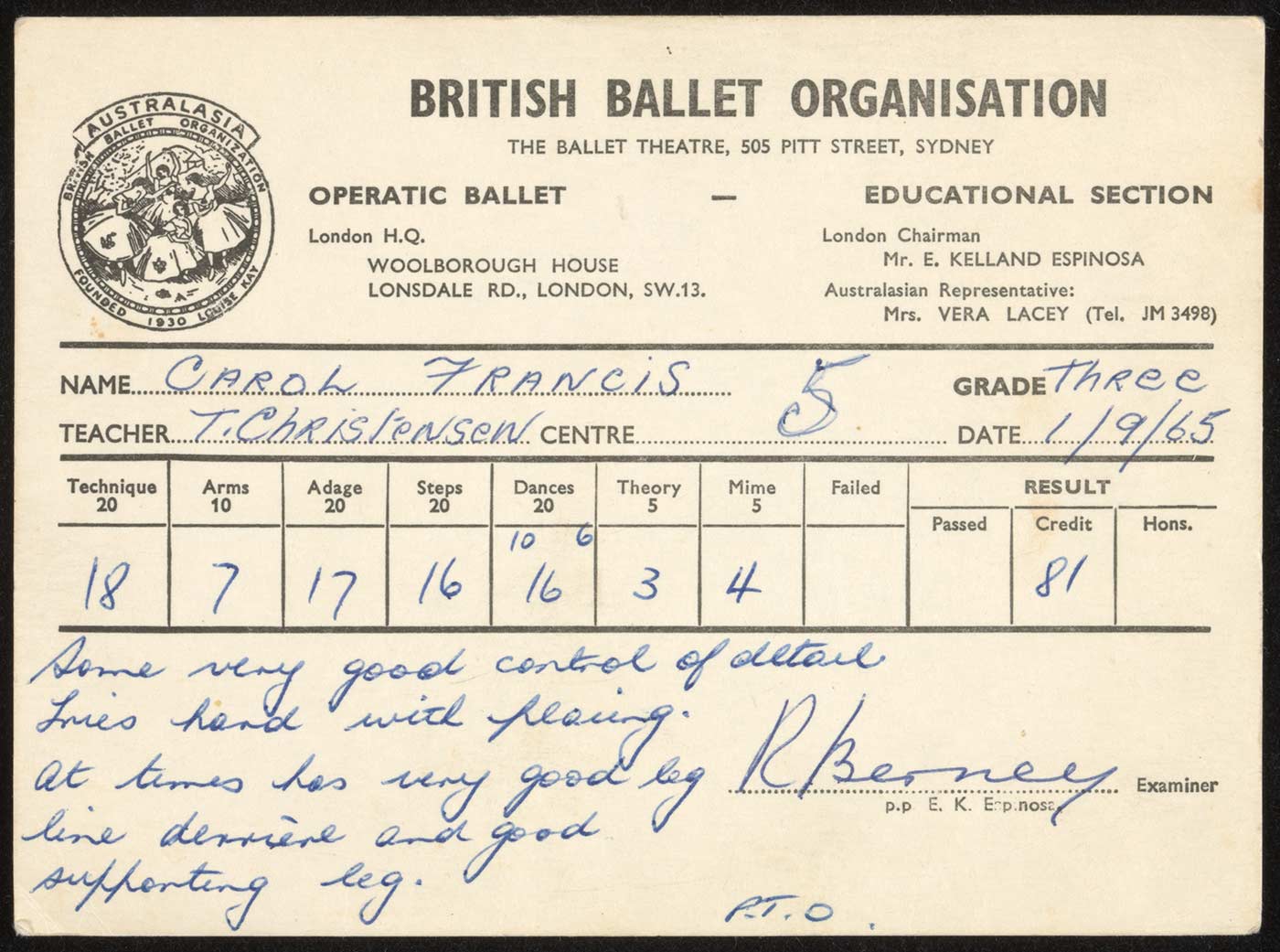
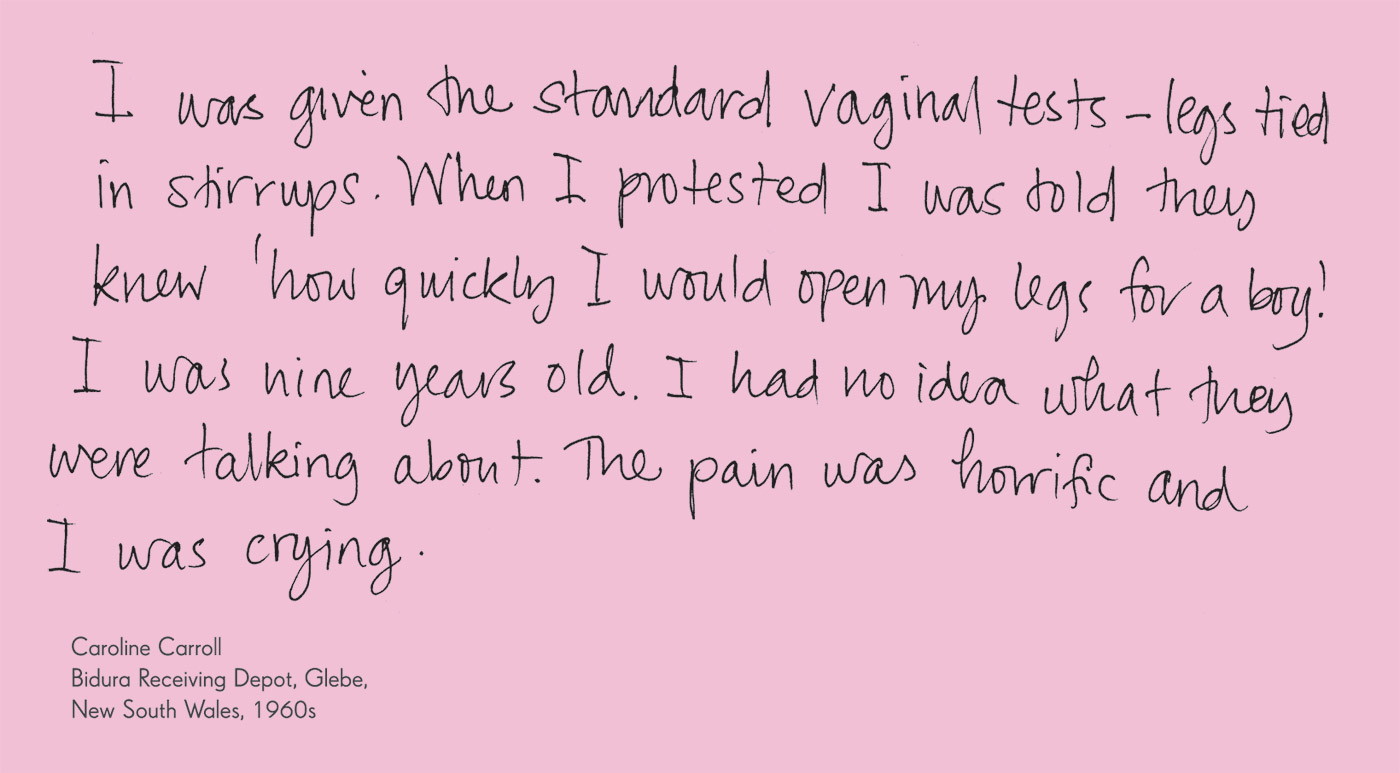
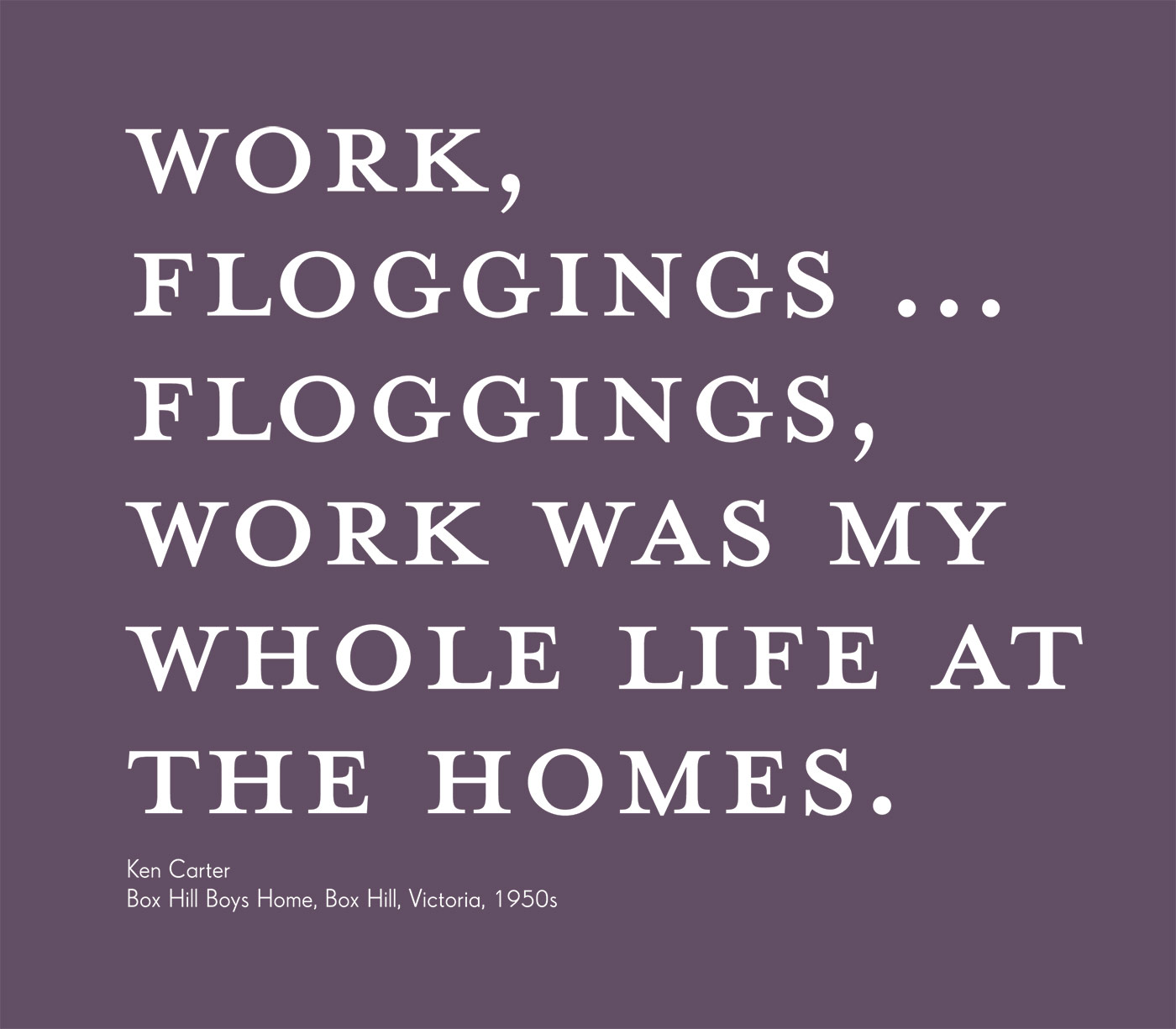
![Exhibition graphic panel that reads: 'I used to think if only I could stay awake all night I wouldn't wet the bed, but of course I couldn't ... [they called me] a](https://www.nma.gov.au/__data/assets/image/0019/717031/I-used-to-think.jpg)
